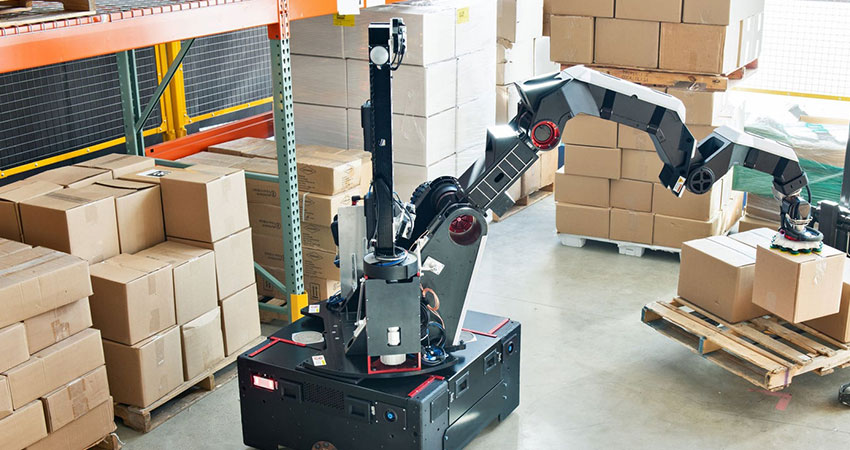Boston Dynamics, creators of the viral dancing robots video just before New Year’s Eve, is making further inroads into the warehouse automation space with the unveiling this week of Stretch, a mobile robot purpose-built for unloading and palletizing and de-palletizing boxes.
The warehouse automation sector could be a springboard to profitability for Boston Dynamics, which was acquired by Hyundai Motor Group in December. It lost $103 million in 2020, up 60% from the prior year.
Stretch will become commercially available in 2022 but is already generating significant interest from the target audience of manufacturers, retailers and 3PLs, according to Brian Nachtigall, director of business development for warehouse robots at Boston Dynamics.
“Today there’s a shortlist of early adopter customers, but we have a few more lines open on our dance card,” Nachtigall said. “We’re talking to lots of companies, and happy to see the inbound interest after our announcement. We’re looking for the right partners to work with for the initial deployments.”
Nachtigall said the initial focus with Stretch is on unloading trucks, putting boxes onto conveyors for receiving, but plans call for quickly expanding its charge to include palletizing and depalletizing boxes and cases, and eventually to roaming warehouse aisles for order fulfillment. Unloading robots aren’t new, but Stretch’s mobility and range of items handled are what differentiates it.
“Order building has enormous potential, building multiple SKU pallets, maneuvering in the racking aisles,” he said. “It’s an enormous market, but there are a number of puzzle pieces that need to come together to solve that.”
Stretch was developed and iterated from earlier material handling robots named Atlas and Handle, which garnered a lot of attention for their capabilities and potential.
“Handle told the world we were paying attention to warehouse robotics,” Nachtigall said. “From there we developed relationships with a number of potential customers who tested it. We quickly figured out it wasn’t the right form factor for this space, which led to Stretch. Because of its mobility and small footprint, Stretch can be deployed quickly in an existing warehouse setting with low infrastructure changes.”
Boston Dynamics sees Stretch as occupying a space between large robotic arms for material handling and autonomous mobile co-bots used in goods-to-person order picking for ecommerce.
“Robot arms are very strong, fast and precise, but have to be bolted to the floor,” Nachtigall said. “At the other end, co-bots can be mounted on a mobile base, but they tend to have relatively low payload capabilities, speed and reach.”
Speaking of the viral video of the dancing robots, Nachtigall said Boston Dynamics received hundreds of enthusiastic emails and calls with ideas for dance moves and songs for its robot family. “We did see a lot of engagement from the video,” he said.
Boston Dynamics was founded in 1992 by Marc Raibert, a professor of engineering at MIT and of robotics at Carnegie Mellon University, and a pioneer in biped and quadruped legged robots. The company, known for its Spot dog-like robot used by SpaceX and in industrial settings, was acquired by Google in 2013, and subsequently by Softbank in 2017. Hyundai acquired an 80% stake in the company in December that valued it at $1.1 billion.

